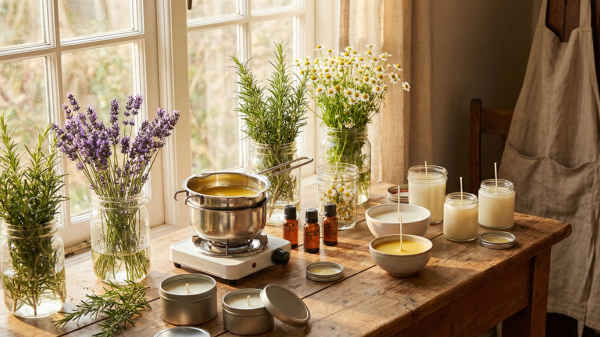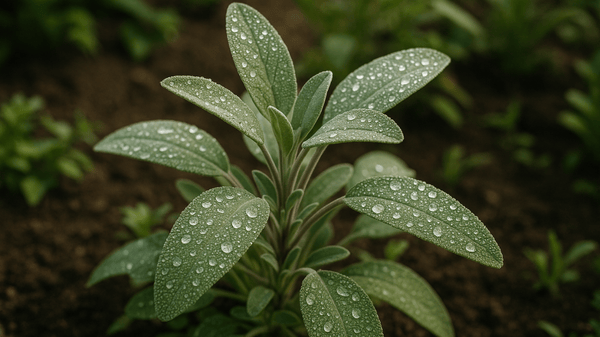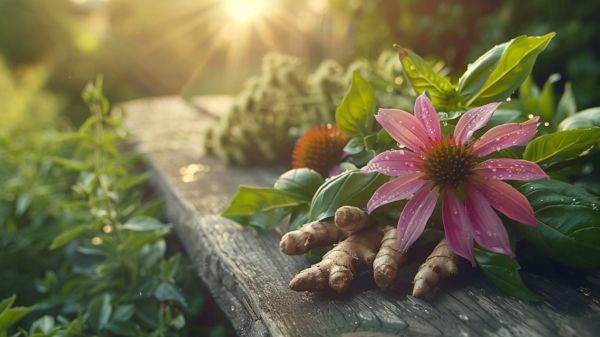Hey there herbal enthusiasts! Want to learn how to preserve those precious medicinal herbal plants? Look no further! In this article, we’ve got you covered with eight effective strategies that will ensure the longevity of your favorite herbal remedies.
From sustainable harvesting practices to seed banking and habitat protection, we’ll guide you through the ins and outs of preserving these valuable resources.
So, let’s dive in and start nurturing those healing plants for a brighter, greener future!
Sustainable Harvesting Practices
To ensure the long-term availability of medicinal herbal plants, you must adopt sustainable harvesting practices. Sustainable farming methods and responsible harvesting techniques are essential for the preservation of these valuable plants.
Sustainable farming involves cultivating medicinal herbs in a way that minimizes negative impacts on the environment and ensures the longevity of the plants. This can include practices such as crop rotation, organic fertilizers, and integrated pest management.
Responsible harvesting techniques involve carefully selecting which parts of the plant to harvest and ensuring that enough is left behind for regrowth and reproduction. It also involves using proper tools and methods to minimize damage to the plant and its surrounding ecosystem.
Cultivation and Propagation Techniques
To effectively cultivate and propagate medicinal herbal plants, you should employ proven techniques and methods. Here are three key strategies to consider:
- Provide optimum soil fertility: Medicinal herbs require nutrient-rich soil to grow and thrive. Conduct soil tests to determine its pH level and nutrient content. Amend the soil with organic matter, such as compost or well-rotted manure, to improve fertility and drainage.
- Implement effective pest control: Pests can pose a significant threat to the health and yield of medicinal herbs. Regularly monitor your plants for any signs of infestation and take preventive measures, such as using insect-repelling companion plants or introducing beneficial insects. In case of severe infestation, consider organic pest control methods like neem oil or insecticidal soaps.
- Practice proper propagation techniques: Different herbs have specific requirements for successful propagation. Research and employ the appropriate method for each herb, such as seed sowing, division, or stem cuttings. Ensure proper moisture levels, temperature, and light conditions to promote successful rooting or germination.
Ethical Wildcrafting Guidelines
Your ethical wildcrafting practices can play a crucial role in preserving the medicinal herbal plants’ sustainability. Ethical harvesting and responsible foraging are essential principles to follow when gathering medicinal plants from the wild. By adhering to these guidelines, you contribute to the long-term survival of these valuable plant species and ensure their availability for future generations.
When engaging in ethical wildcrafting, it’s important to consider the impact of your actions on the plant populations and their habitats. Only harvest plants that are abundant and resilient, leaving behind enough individuals to maintain healthy populations. Avoid collecting endangered or protected species to prevent further harm to their populations.
Furthermore, practice responsible foraging by obtaining proper permits and permissions when necessary. Respect private property and obtain landowner consent before gathering plants. Additionally, familiarize yourself with local regulations and guidelines to ensure compliance with legal requirements.
Conservation Through Seed Banking
Implementing conservation through seed banking is a proactive approach to preserving medicinal herbal plants for future generations. By collecting and storing seeds from various plant species, seed banking ensures their long-term survival and availability.
Here are three key benefits of seed banking:
- Preservation of genetic diversity: Seed banks collect seeds from a wide range of plant populations, preserving the genetic diversity necessary for adaptability and resilience in the face of environmental changes.
- Seed exchange programs: Seed banks facilitate the exchange of seeds between communities and organizations, promoting collaboration and ensuring access to a diverse range of medicinal plants.
- Community education initiatives: Seed banks play a vital role in educating communities about the importance of conserving medicinal herbal plants. They provide resources and workshops, empowering individuals to participate in seed saving and sustainable cultivation practices.
Protection and Management of Medicinal Plant Habitats
Preserve the habitats of medicinal plants by implementing effective strategies for protection and management. Habitat restoration is a crucial step in ensuring the survival and proliferation of these valuable plants. By restoring degraded habitats, we can provide the necessary conditions for medicinal plants to thrive.
This can be achieved through activities such as reforestation, erosion control, and invasive species management. In addition to habitat restoration, community engagement plays a vital role in protecting and managing medicinal plant habitats.
By involving local communities in conservation efforts, we can foster a sense of ownership and responsibility, ensuring long-term sustainability. Community members can contribute by participating in habitat restoration activities, monitoring plant populations, and raising awareness about the importance of these habitats.
Through a collaborative approach, we can protect and manage medicinal plant habitats for the benefit of both the plants and the communities that rely on them.
Conclusion
To ensure the preservation of medicinal herbal plants, it’s crucial to implement sustainable harvesting practices. This involves carefully monitoring the amount of plants being harvested and ensuring that it is done in a way that allows the plants to regenerate and thrive.
Another important step is to cultivate and propagate these plants. By growing them in controlled environments, we can reduce the need for wild harvesting and protect the natural populations.
Adhering to ethical wildcrafting guidelines is also essential. This means only collecting plants from areas where they are abundant and not harming the surrounding ecosystem in the process.
Establishing seed banks for conservation is another effective strategy. By storing seeds from different medicinal plants, we can ensure their survival even in the face of environmental challenges or loss of habitat.
Lastly, it is crucial to protect the habitats where these plants grow. This can include preserving natural areas, implementing conservation measures, and raising awareness about the importance of these ecosystems.
By employing these strategies, we can safeguard the future of these valuable medicinal resources, allowing them to flourish and continue providing their healing properties for generations to come.
Let’s all play our part in preserving the rich tapestry of nature’s pharmacy.




